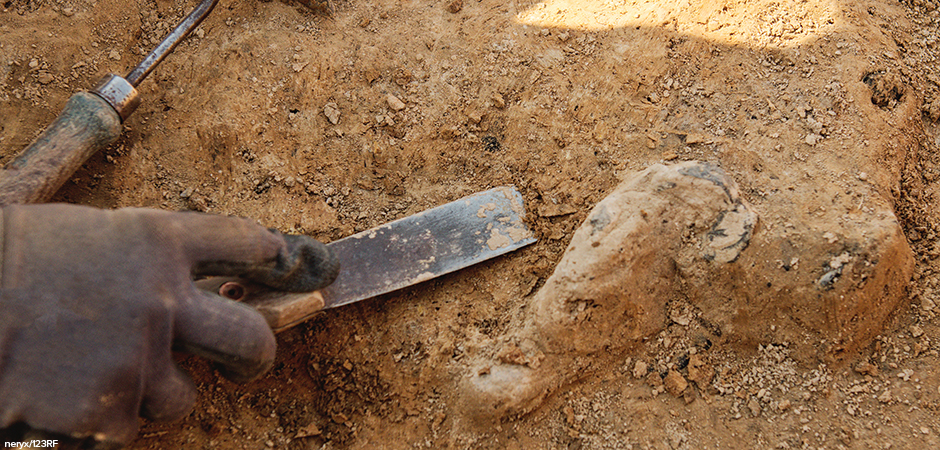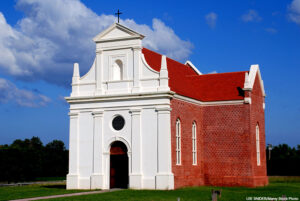
In 1633, the English sailing ships Ark and Dove sailed across the Atlantic Ocean with about 150 passengers. Many were Catholics who left England to avoid religious persecution and discrimination by Protestants. These settlers were led by Leonard Calvert and Father Andrew White, a Jesuit priest. In March 1634, the ships landed on the western side of Chesapeake Bay. This group established the first colonial settlement in what is today Maryland.
Settlers Encounter the Yaocomaco and Buy Land
In Chesapeake Bay, the settlers met the Yaocomaco people, an independent Native American group associated with the Piscataway. These native peoples had lived in the area for at least 10,000 years. The Yaocomaco farmed and lived in permanent villages.
According to White’s letters, colonists paid the Yaocomaco for land along what is now the St. Mary’s River. Their purchase was for an area of about 30 miles in all directions. The colonists paid for the land with axes, hoes, hatchets, and cloth. The colonists built a fort on the land. The settlement where the fort was located was named St. Mary’s City. It served as Maryland’s first capital for more than 50 years. The site was abandoned after Annapolis became the capital of the Maryland colony in 1694. For more than 300 years, St. Mary’s was left alone. The fort’s buildings decayed, and the area was reclaimed by nature as an open meadow.
Making the Discovery
Archaeologists had been looking for the site of St. Mary’s Fort since the 1930s. In 2017, archaeologist Travis Parno took up the search. Parno is the director of research and collections for Historic St. Mary’s City (HSMC). Another researcher, archaeological geophysicist Tim Horsley, used ground-penetrating radar to scan the area. Horsley’s equipment detected markings of a trench and postholes outlining a building. Excavation in late 2019 uncovered an area about the size of a football field, 104 yards by 58 yards. However, in a 1634 letter, Calvert had described the fort as 120 yards square. The archaeologists were confused by this difference.
In the summer of 2020, Parno’s team found artifacts including a silver shilling with maker’s marks on both sides. It is believed that the shilling was printed in London between 1633 and 1634. This was an indicator that archaeologists had found what they had been searching for—St. Mary’s Fort. They also found a Catholic medal, a guardhouse brick cellar, parts from a musket, and a 4,500 year-old arrowhead. The fort may have been built surrounding several existing native dwellings.
St. Mary’s Fort is the fourth-oldest English settlement in North America uncovered by archaeologists. English colonists had previously settled Jamestown in 1607, Plymouth in 1620, and Massachusetts Bay in 1630.
The Work in Historic St. Mary’s City
The fort’s excavations are part of a larger HSMC project called People to People. Its goal is to explore native-colonial interactions in early Maryland. Archaeologists also plan to excavate indigenous sites near the fort to learn how land was used before Europeans arrived.

Historic St. Mary’s City is a National Historic Landmark, recognized in 1969. Today it operates as an outdoor living history museum. There are four outdoor exhibits on the site. These exhibits include a replica of the Dove, a tobacco plantation from the 1600s, and the Woodland Indian Hamlet in which visitors can explore life of the Yaocomaco. Buildings like the State House and the Brick Chapel have also been reconstructed. Students can also apply to participate in the annual, six-week Field School in Historical Archaeology and help uncover more evidence of past peoples.
